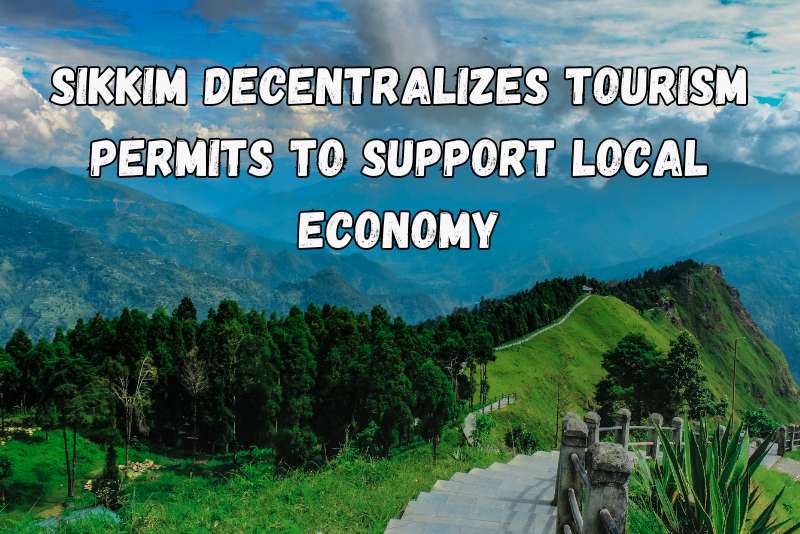
Gangtokian News Desk: Sikkim’s Tourism and Civil Aviation Department has introduced a major policy shift to decentralize the Protected Area Permit (PAP) system, aiming to boost local tourism in the Namchi and Soreng districts. This new approach, effective from September 24, 2024, is intended to simplify access to prominent tourist destinations like Nathula Pass and Tsomgo Lake. The move comes in response to directives from Chief Minister Prem Singh Tamang, who seeks to promote balanced development across Sikkim’s tourist hotspots.
Key Changes in the Permit System
The revised system will allow the issuance of 50 vehicle permits daily for Nathula Pass, a historically significant and popular destination. Unlike the previous centralized approach, permits will now be distributed through designated tourism offices in each district. This change aims to cut down on the bureaucratic processes that have long complicated travel to these sites, especially for both domestic and international tourists.
A key highlight of the new system is the provision of free Nathula Pass permits for domestic tourists who spend at least one night in registered hotels or homestays in Namchi or Soreng. To qualify, visitors must present a valid hotel bill and supporting documents via a local travel agency at least three days before their planned travel date. This initiative encourages extended stays, providing a direct economic benefit to local businesses and accommodations.
Focus on Local Tourism Development
The policy ensures that 33% of daily permits are reserved specifically for Namchi and Soreng districts, allocated on a payment basis for non-residents and locals. While permit issuance is capped at 50 per day, bookings can be made up to three days in advance, giving tourists flexibility in their travel planning while still ensuring a manageable flow of visitors to these high-demand locations.
Permit Rules for Foreign Tourists
Foreign nationals visiting Sikkim will also benefit from the new system, which includes one-day PAPs for Tsomgo Lake and five-day permits for Lachung, Lachen, Yumesamdong, Thangu, and Dzongu, as well as access to various North Sikkim destinations that showcase the region’s stunning natural beauty and cultural significance. Applications for these permits must go through local registered travel agencies, and all foreign visitors are required to be accompanied by certified guides, in line with local regulations. This policy helps safeguard both the environment and local communities, while also enhancing the experience for international tourists through guided tours.
However, it is important to note that foreign tourists have restricted access routes to Tsomgo Lake, limited to the JN Road axis. The Lingtam axis remains off-limits, ensuring stricter control over sensitive areas.
Impact on Local Economy and Sustainability
Chief Minister Tamang’s vision for sustainable tourism is clearly reflected in this decentralization initiative. By easing access to these iconic locations and fostering local engagement, the government hopes to support economic growth across Namchi and Soreng. The policy empowers local businesses, travel agencies, and guides, aiming for a more inclusive tourism model that directly benefits the community.
Increased tourism is expected to drive revenue for local industries such as hospitality, transportation, and other related services. The move also aims to instill a greater sense of cultural pride among residents, encouraging them to participate in preserving and showcasing Sikkim’s unique heritage and natural beauty.
Gangtokian Web Team, 23/09/2024
















































